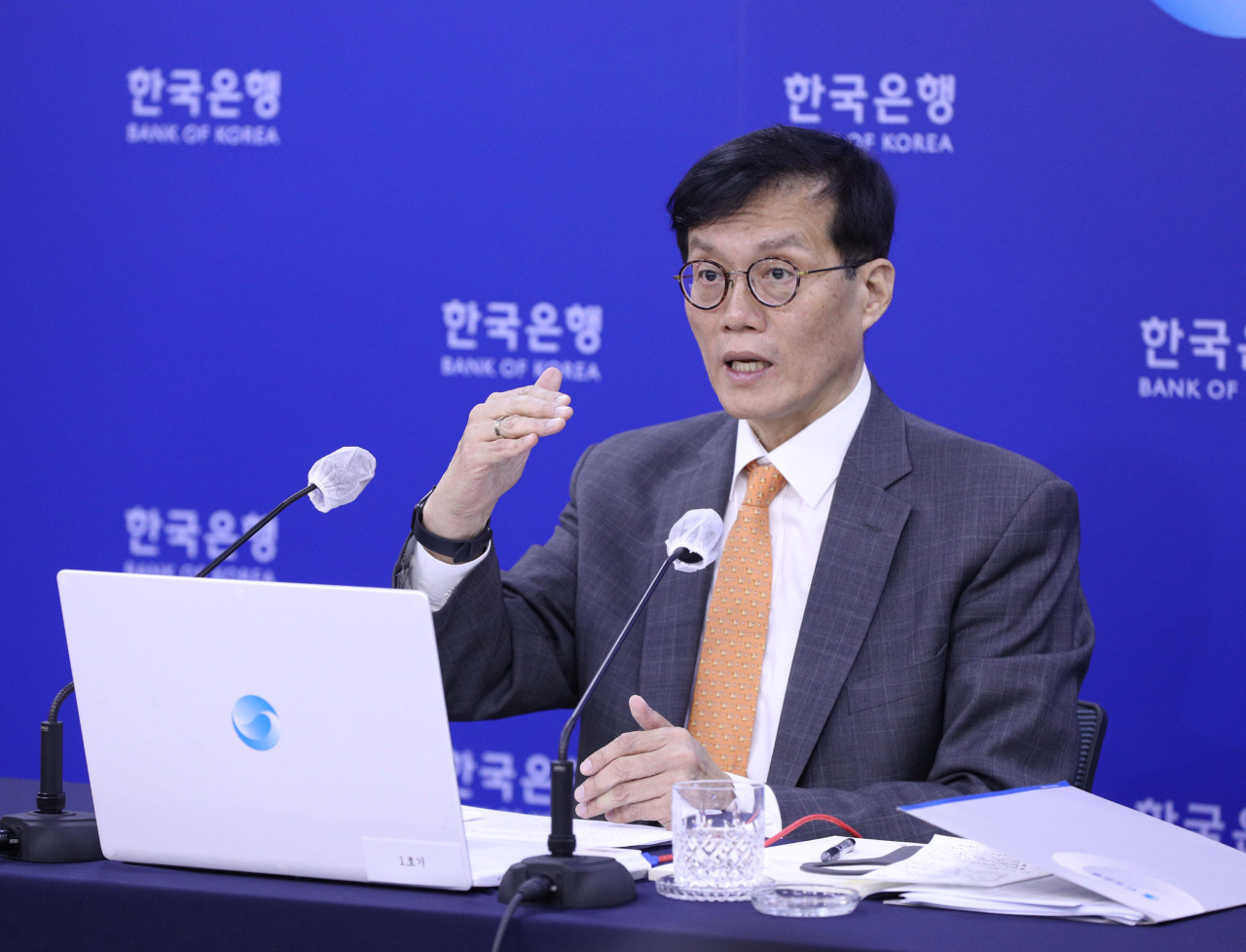S. Korea confirms second big rate hike as surging dollar adds to inflation woes
By Choi Si-youngPublished : Oct. 12, 2022 - 16:27

The Bank of Korea returned to its second outsized rate hike since July as a surging US dollar and higher import bills chip away at efforts to curb persistent inflation.
The central bank raised its policy rate to a 10-year high of 3 percent by 50 basis points on Wednesday -- an increase that is twice the usual size and marks a break from the August guidance that supported a gradual 25 basis point hike until this year’s last round of a rate-setting meeting in November.
“We need to step up policy tightening since the dollar rally is raising fresh inflation pressure and currency risk, when consumer prices are persistently high,” the BOK said, referring to the quickly depreciating won that is now at a 13-year low against the greenback amid aggressive US policy tightening.
Higher import bills and liquidity concerns prompted by a spiraling won were what had worried the seven-member board the most in reaching the decision, according to BOK Gov. Rhee Chang-yong. But massive capital outflows, led by investors expecting higher dollar yields, are not worrisome at the moment, Rhee added.
The interest rate differential involving the two countries has long been the focus of debate every time the BOK sets policy. The US rate, currently between 3 and 3.25 percent, is expected to rise to 4.5 percent by year-end, whereas the Korean rate is expected to reach 3.5 percent, if another big rate increase is backed again in November. A gap as big as a full percentage point is something the bank could weather, Rhee has said.
“A rate hike will take place the next time we meet (in November), but how big it will be depends on the totality of incoming data,” Rhee said. “We won’t stop at exactly 3.5 percent, though. It will be ‘around it,’” Rhee added, highlighting higher borrowing costs to curb elevated inflation.
According to the BOK, consumer inflation eased in September for a second straight month, but the annual price increase for this year is expected to reach 5.2 percent, well above the bank’s 2 percent target. And inflation will run at a high 5-6 percent until the first quarter next year, Rhee said. He has previously said consumer prices could reach their peak in October.
Meanwhile, the bank warned that business activity is slowing and shrinking exports are now a bigger threat to the economy. In August, Korea’s current account swung to the red by the biggest margin in about two years, prompted by higher energy import costs. The current account balance had logged a surplus since May 2020, except for April this year.
While the growth forecast for the year remains largely unchanged at 2.6 percent, economic expansion could fall short of 2.1 percent, the bank said, citing the recent big rate hikes. The revised forecast will be released by November, it added. Earlier in the week, the International Monetary Fund slashed Korea’s growth forecast for 2023 to 2 percent, from 2.1 percent, given prolonged inflation and a potential downturn afterwards.
Worsening repayment burdens for households with loans is another challenge putting policymakers on edge.
As of December last year, some 381,000 households would be unable to repay their loans even if they liquidated everything they have including their homes. A single interest rate hike of 50 basis points would push up the interest owed by 6.5 trillion won ($4.5 billion) for all borrowers combined, recent Bank of Korea showed.
“I do feel the pain. But we have to forge ahead (with rate hikes),” Rhee said. “Tighter policy for now, looser policy for later.”







![[Graphic News] More Koreans say they plan long-distance trips this year](http://res.heraldm.com/phpwas/restmb_idxmake.php?idx=644&simg=/content/image/2024/04/17/20240417050828_0.gif&u=)
![[KH Explains] Hyundai's full hybrid edge to pay off amid slow transition to pure EVs](http://res.heraldm.com/phpwas/restmb_idxmake.php?idx=644&simg=/content/image/2024/04/18/20240418050645_0.jpg&u=20240419100350)






![[From the Scene] Monks, Buddhists hail return of remains of Buddhas](http://res.heraldm.com/phpwas/restmb_idxmake.php?idx=652&simg=/content/image/2024/04/19/20240419050617_0.jpg&u=20240419175937)

![[KH Explains] Hyundai's full hybrid edge to pay off amid slow transition to pure EVs](http://res.heraldm.com/phpwas/restmb_idxmake.php?idx=652&simg=/content/image/2024/04/18/20240418050645_0.jpg&u=20240419100350)

![[Today’s K-pop] Illit drops debut single remix](http://res.heraldm.com/phpwas/restmb_idxmake.php?idx=642&simg=/content/image/2024/04/19/20240419050612_0.jpg&u=)